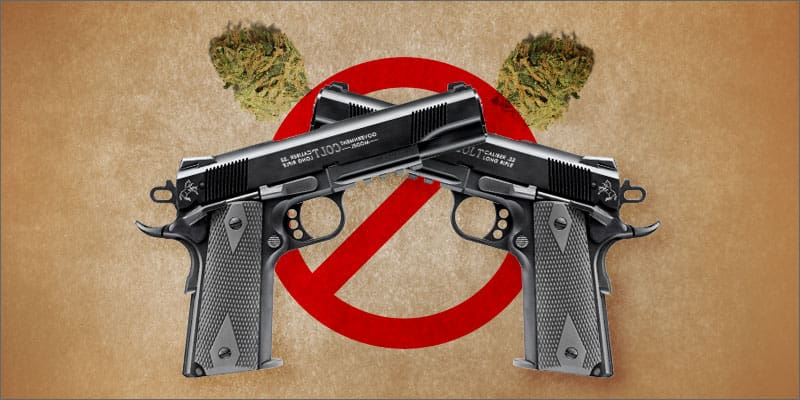https://youtu.be/TxucRo0TGYg
“I probably won’t be the first one to say that Smith & Wesson knows how to make a revolver,” TTAG reviewer Steven Vissier wrote back in the day. Nor, it turns out, was he the last. RF and Nick continue their series of two-minute-ish video reviews by singing the praises of the Smith & Wesson Model 617. Click here to read Mr Vissier’s take.




Why did S&W feel the need to add CTG (Cartridge) to the caliber on the barrel?
Not sure, but the CTG thing goes back to at least 1899, when some of the M&P models (aka Model 10) were stamped that way. Maybe it has something to do with S&W making cartridge revolvers when others were still making cap ‘n ball guns? Dunno.
The only reason for putting on there now is tradition.
The price is slightly higher than the model number.
SO glad it’s a 10-shot ! Had a K17 Masterpiece and never could figure out why S&W left it a 6-shooter with all that room in the cylinder.
Would much rather have this than any .22 auto.
When you change the # of rounds in a revolver cylinder, there’s a bunch of fiddly work that needs to be done to the ratchet on the cylinder, the hand, what sets off the cylinder stop and where the hand is on the trigger to get lockwork to time up correctly. You have to do this on any revolver, of course, but if all you’re doing is changing the size of the chambers in the cylinder, then you need change nothing about the hand, ratchet, cylinder stop, etc. The number of degrees in a single cartridge rotation is the same for all six shooters – 60 degrees. It doesn’t matter whether it’s a .500 Buffalo Blaster Magnum or a .9mm Hypervelocity Gang Banger Special; the center of the chamber will be cut in the same position on the cylinder, regardless of the diameter of the chamber.
In the case of re-working a .38/.357 revolver to .22LR and keeping it at just six shots, you need to change the firing pin for a rimfire instead of centerfire, and that’s about it. You get a high payoff for your investment in tooling, fixtures, jigs, etc.
DG needs to be payed. The wisdom he brings to this site is invaluable.
So, if this is a full size revolver, what size is a 686? 629? X frame?
Full, fuller, fullest.
The 617 is a K frame. The 686 is a K/L frame.
The “X” frame is used for only the very largest cartridges – the S&W 460 and 500 revolvers.
So the progression is:
J-frame – .38/.357 snubbies, five shot cylinders, and the 8-shot 317 in .22LR.
K-frame – this was the classic sized, six-shot revolver in .38 Special and .357 Magnum, as well as the .22LR target revolvers. The K-frame was the mainstay of S&W for decades and decades.
L-frame – this was the six to eight shot, beefed up .38/.357 frame. It’s not a
N-frame – The frame used by the larger cartridges, the .41 Mag, .44 Mag, .45 Colt.
X-frame – the cannons that should come with a carriage under them, the 460 and 500’s.
See
I have been looking for a 617 or 63 to use for transition training to.38 Spl/357 Mag, but I wish they still made the 6-shot. The 10 shot ain’t worth squat for training, unless you want to teach bad habits.
Make mine a Ruger GP100 10 shot .22 LR. Have a ten shot Ruger Single Ten that is a beauty to hold, look at & shoot.
I’ll stick with the 6-shot blued Model 17. Better balance than the 617 with full underlug.
“I’ll buy a new Smith & Wesson when they take the damn locks off of all the revolvers.” – Me for years.
“I’ll buy a new Smith when they start to give a damn about quality again.” – Me, more recently, as I do more research.
I’m hearing more and more stories like this: (review of Model 617)
https://youtu.be/TVebh06cF7o
I know – anecdotal evidence but compelling nonetheless, considering I’ve heard lots of stories like this.
Don’t get me wrong – I have a S&W Model 19 that is just as sweet as can be, makes one ragged hole, looks beautiful and will only go up in value, though I’ll never sell it. I also have a 581 that’s almost as pretty and shoots just as well. These are pretty nice heirlooms that will go to my children, but they’re 30-40 years old, made to a standard that I believe Smith has abandoned long ago.
I’m not sure I’ll ever buy a new gun from Smith & Wesson as I hear more stories about locks that fail and prevent a gun from firing (from this very website), stories of new revolvers with two piece barrels to keep costs down. (which is questionable logic considering that S&W models are the most expensive among its peers – the other high volume revolver manufacturers like Ruger, Taurus, Charter Arms)
Check out the review above that Not Jimbo references, it’s *scary*, to say the least.
NIB model 617, as shipped from S&W had this wrong with it:
1- The firing pin was short by 6 thou, causing repeated misfires.
2- The front sight was canted at an angle, because the barrel wasn’t square with the frame.
3- The recoils shield had a rather noticeable burr on it.
4- The finish on the barrel was clearly noticeably different from the frame.
Four deal-breaker quality issues on a $650 gun from Smith? Whoa…
Not one bit surprised, seems QC at Scrap & Worthless was abandoned some time ago on everything they haphazardly throw together.
Comments are closed.